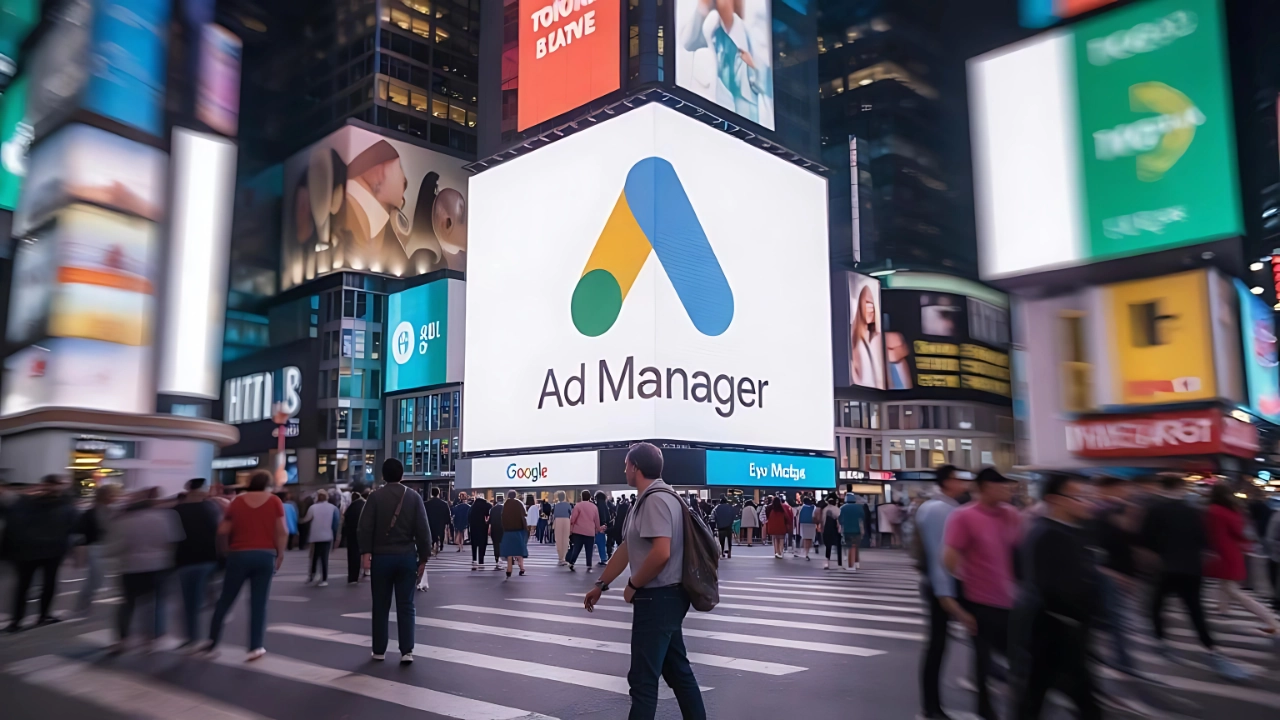Maximizing Ad Revenue: Integrating AdSense with Google Ad Manager
In today’s digital world, maximizing ad revenue isn’t just an option—it’s essential for publishers and content creators. One of the most effective ways to achieve this is by integrating AdSense with Google Ad Manager (GAM). This powerful duo not only streamlines your ad space management but also unlocks advanced features that can significantly boost your earnings.
Why Marry AdSense with Google Ad Manager?
Think of Google Ad Manager (formerly DoubleClick for Publishers) as your sophisticated ad operations control center. It lets you manage a complex inventory, from direct sales to third-party ad networks and demand platforms. Then there’s AdSense, Google’s widely used ad network, offering a straightforward path to monetizing your content with relevant ads.
Bringing these two advertising powerhouses together creates an unbeatable synergy:
Centralized Control: Say goodbye to juggling multiple platforms! Manage all your ad demand sources—direct campaigns, external ad networks, and AdSense—from one central hub.
Fiercer Competition: GAM empowers AdSense to go head-to-head with other demand sources in a unified auction. This means the highest-paying ad wins, whether it’s from your direct sales team or AdSense, ensuring you always get top dollar.
Dynamic Allocation: Your Smart Revenue Booster: This isn’t just about filling unsold space. Dynamic allocation allows AdSense to compete in real-time with your directly sold ads. If AdSense bids higher than your direct campaign’s minimum price, or another network’s bid, AdSense gets the impression. It’s revenue optimization on autopilot, maximizing every single ad view.
Private Auctions: Premium Control, Maximum Fill: GAM lets you host private auctions with handpicked buyers. You set the rules, define minimum prices, and maintain control over your premium inventory. And guess what? AdSense acts as your intelligent fallback, ensuring no impression goes to waste even after your private auction concludes.
Actionable Insights: Dive deep into your ad performance with comprehensive reports. Understand what’s working, where the money is, and how to fine-tune your strategy for even better results.
Unlocking More Revenue: Dynamic Allocation and Private Auctions Explained
Dynamic allocation is truly the game-changer in GAM-AdSense integration. It transforms AdSense from a simple “filler” into an active competitor. Instead of waiting for unsold inventory, AdSense actively participates in real-time auctions alongside all your other demand sources. This guarantees that you’re always getting the best possible value for each ad impression, literally pulling more money from your ad slots.
Private auctions, on the other hand, give you a VIP pass to controlling your ad inventory. You invite specific advertisers to bid on your ad space, setting your own floor prices to ensure only high-quality ads are displayed. In this setup, AdSense remains your reliable partner, stepping in to fill any impressions not sold through the private auction, ensuring continuous monetization.
Your Step-by-Step Guide: Seamlessly Integrating AdSense with Google Ad Manager
Getting set up is quite straightforward, but attention to detail makes all the difference:
1. Link Your AdSense Account to Google Ad Manager
Access GAM: Log in to your Google Ad Manager account. Head to Admin: In the left-hand menu, click “Admin,” then “Linked accounts.”
Connect AdSense: Click “New AdSense account” and follow the prompts. You’ll need administrator access for both accounts.
A Little Patience: Google typically approves the linking process within a few hours.
2. Create Ad Units in Google Ad Manager
Go to Inventory: From the left menu, select “Inventory,” then “Ad units.”
New Ad Unit: Click “New ad unit” and give it a clear, descriptive name (e.g., “Article_Top,” “Sidebar_Main”).
Set Sizes: Specify the ad sizes you want this unit to display (e.g., 300×250, 728×90).
Set Sizes: Specify the ad sizes you want this unit to display (e.g., 300×250, 728×90).
3. Configure Dynamic Allocation for AdSense
Create a New Order Line: In the left menu, click “Orders,” then “New line item.”
Choose AdSense: Select “AdSense” as the line item type.
Name & Settings: Give your line item a meaningful name (e.g., “AdSense_Dynamic_Allocation”).
Select Inventory: Choose the ad units you want AdSense to dynamically fill. Priority: AdSense will automatically be set for dynamic allocation, meaning it competes directly with other line items.
Save: Don’t forget to save your new line item!
4. Generate and Implement Ad Tags
Back to Inventory: In GAM, go to “Inventory,” then “Ad units.”Generate Tags: Select your desired ad unit and click “Generate tags.”
Pick GPT:Google Publisher Tag (GPT) is the recommended tag type.
Place on Your Site: Copy the generated code and paste it into the <body> section of your webpage where you want the ad to appear. Make sure the googletag.cmd.push(function() { googletag.display('div-gpt-ad-...'); }); code is correctly placed.
5. Optional: Set Up Private Auctions
Access Sales: In GAM, go to “Sales,” then “Private auctions.”
Create New: Click “New private auction.”
Configure Details: Assign a name, invite specific buyers, set minimum prices, and select the inventory for the auction.
AdSense as Fill: Remember, AdSense will automatically serve as a fill-in for any impressions not sold through your private auctions.
SEO Best Practices for a Thriving Ad Strategy
To attract more organic traffic, engaged readers, and valuable backlinks (which indirectly boosts ad revenue!), weave these SEO best practices into your strategy:
Craft Exceptional Content: Your content is king! Produce original, highly relevant, and truly valuable material that answers your audience’s questions. This builds authority, keeps users on your page longer, and encourages sharing.
Smart Keyword Research: Use reliable tools to discover the most relevant and high-volume keywords in your niche. These are the terms your audience is actively searching for.
On-Page Optimization is Key: Strategically integrate your target keywords into your titles, meta descriptions, headings (H1, H2, etc.), and throughout your body copy.
Prioritize User Experience (UX): A fast, mobile-responsive, and easily navigable website isn’t just nice to have—it’s crucial for higher Google rankings and happy users.
Build High-Quality Backlinks: Earn backlinks from reputable, relevant websites. This is a powerful signal to Google that your site is an authoritative source, significantly boosting your SEO.
Strategic Ad Placement: Ads should enhance, not detract from, the user experience. Avoid overwhelming or intrusive placements, as this can lead to higher bounce rates and unhappy visitors.
Leverage Structured Data (Schema Markup): Implement schema markup to help search engines better understand your content. This can lead to richer, more prominent snippets in search results, drawing more clicks.
By embracing these steps and integrating smart SEO tactics, you’re not just setting up ads; you’re building a robust foundation for maximizing your ad revenue and cultivating a truly profitable and sustainable online presence.
Conclusion
The integration of AdSense with Google Ad Manager represents a powerful combination for publishers and content creators seeking to maximize ad revenue. By centralizing the management of various demand sources, this union not only simplifies inventory administration but also increases competitiveness through unified auctions and dynamic allocation of impressions.
With AdSense acting as a strategic competitor in real-time, each impression has the opportunity to reach its maximum value. Private auctions, in turn, offer refined control over premium inventory, enabling the setting of minimum prices and guaranteeing high-quality ads.
Furthermore, the application of best SEO practices and the production of rich and relevant content strengthen online presence, attracting qualified organic traffic. This integrated approach not only elevates ad performance but also sustains long-term growth, providing a robust and effective strategy for sustained digital monetization.


